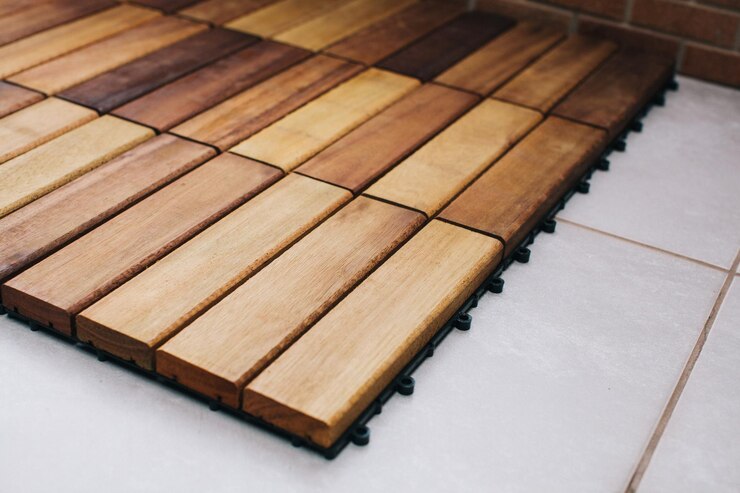Mastering Tile Adhesive: A Comprehensive Guide to Benefits, Uses, Application, and More

Tile adhesive is a crucial component in the construction and renovation industry, serving as the bonding agent that holds tiles firmly in place. Its importance cannot be overstated, as it not only ensures the aesthetic appeal of tiled surfaces but also contributes significantly to their durability and longevity. Understanding the nuances of tile adhesive, including its benefits, uses, application techniques, and more, is essential for anyone involved in construction, remodeling, or DIY projects.
Benefits of Tile Adhesive
1. Superior Bonding Strength: Tile mortar provides excellent adhesion, meaning that once installed on a substrate- such as concrete wood and drywall; the tiles remain tightly bound. This strong adhesion greatly reduces the propensity of tiles to become loose or dislodge with time even in high moisture environments such as bathrooms and kitchen areas.
2. Increased Durability: With the help of tile adhesive, a strong bond is provided between tiles and substrates which increases to durability tiled surface. This extended permanence is especially beneficial in environments that are exposed to high loads and/or wet conditions; areas where conventional adhesives simply do not perform as well.
3. Versatility: Tile adhesives can be used with almost every kind of tile like – ceramic, porcelain, glass, and natural stones. This flexibility enables contractors and home enthusiasts to use the same adhesive for diverse tiling works, thereby streamlining the selection process and cutting costs on storage since they can all work with one product.
4. Moisture Resistance: Many tile adhesives have moisture-resistant properties and hence they are suitable for applications in wet areas like bathrooms, showers & and swimming pools. These specially designed formulations prevent the water penetration behind tiles resulting in lesser chances of mildew, mold, and substrate getting spoilt.
5. Flexibility: The flexible tile adhesives absorb the movement of substrates and thermal expansion thus minimizing cracking or fracturing in tiled surfaces. This flexibility is of great importance in areas where the temperature may vary or structural morphing, such as shifting of structures occur.
Uses of Tile Adhesive
1. Floor Tiling: Tile adhesive is popular to lay floor tiles within domestic residential and commercial buildings as well as light industrial. In doing ceramic tile installation, no matter if you want to use the tiles in a kitchen or install other natural stone tiles on foyer and threshold areas; this type of work would find an adhesive necessary for support.
2. Wall Tiling: Situated from the point of the case in bathroom walls up to kitchen backsplashes, tile adhesion gives needed sticking quality help when it comes to wall tiles applied vertically. It sticks to a wide range of substrates which are perfect for laying tiles on drywall, cement board, plaster, and others.
3. Exterior Applications: Tile adhesive manufactured for external use is meant to resist the effects of harsh weather elements, UV radiation, and extreme temperatures. The constructors widely apply these adhesives to outdoor tiling works like patios, and facades because traditional mortars are prone to failure under environmental conditions.
4. Specialty Projects: Tile adhesive is available in specialized formulae for use, depending on the situation including large tiles, glass mosaics, and areas with increased traffic. Such advanced adhesives are intended for an improved hold, flexibility or other characteristics purpose-built toward selected types of tiling.
Application of Tile Adhesive
1. Surface Preparation: Good tile installation is only possible when the surface has been properly prepared. The actual surface is to be clean, dry, flat, and free of dust debris grease, etc that could settle adhesion. Second, priming may be required to favor bonding and prevent substrate uptake.
2. Mixing: Mix the tile adhesive with water according to the manufacturer’s directions using the recommended amount of liquid, and apply it in straight unbroken beads at uniform spacing. Blend adhesive completely until the consistency is a smooth lump but do not over stir to prevent air bubbles.
3. Application Techniques: Lay tile adhesive onto the substrate with a suitable trowel, spreader, or notch to which seeing as about eventually effectively gauge and style of tract. Distribute the adhesive homogeneously, making sure even coverage is maintained to achieve full contact between the back of the tiles and its gluing surface.
4. Tile Installation: Push the tiles firmly onto the adhesive with a little bit of twist to ensure strong bonding and alignment. Use the spacers to keep consistent grout joints, and always check how straight your tiles are.
Exploring Advanced Considerations in Tile Adhesive: Optimization, Challenges, and Sustainability
-
Grouting
The tiled surface should then be grouted after allowing the tile adhesive to cure as per the manufacturer’s instructions. Use good grout suitable for the application, apply proper grouting techniques to glass joints, and ensure finding it satisfactory.
-
Curing and Maintenance:
During such a time of tile installation allow the adhesive to set and come firm before exposing it for intense use or immersion in moisture. Cure according to the manufacturer’s recommended curing period of 24-48 hours depending upon variables such as temperature and humidity. After the curing of the adhesive, keep the tiling clean by normal use with a mild detergent and water solution. Try to avoid using cleaners that are abrasive in nature or harsh chemicals that could destroy the tiles and ruin the bond of adhesion between them.
-
Troubleshooting:
If there are any defects of adhesive, namely that the base sink will go loose from the wall; tiles shift off the ground, or grout cracking and not level flat surface appearance at once those problems need to be rectified immediately. Reasons for adhesive failures are poor surface preparation, the wrong type or mixture of adhesives and also using improper application techniques. Contact the concerned professional for help if you encounter obstacles or need troubleshooting adhesive-related problems to guarantee the longevity of your tiled assembled surfaces.
-
Environmental Considerations:
Some environmental factors when choosing tile adhesives are indoor air quality, VOC emissions, and sustainability. Seek out low-VOC (volatile organic compound) or eco-labels that reduce environmental impacts and promote higher indoor air quality. Also, look at opportunities for recycled-content adhesives or products endorsed by independent bodies as good from an environmental point of view.
-
Adhesive Types and Formulations:
Tile adhesive is a polymer dispersed in an organic solvent and may use mineral fillers, surfactants, or tie coat emulsifiers as additives with the coating formulated to meet specific performance requirements and application needs. Some of the common forms of tile adhesive are cement, epoxy_, acrylic, and pre-mixed self-leveling mortars. Make sure to consider the type of substrate, adhesion class that was achieved using tile material, and necessary environmental conditions together with project dimension for profitable selection between all specifications following when determining what sort of adhesive would be best suited to your tiling job. Talk to the adhesive manufacturers or for that matter, you can also connect with professionals in the industry who will let you know which kind of adhesives should be selected depending on your precise needs.
-
Safety Precautions:
When using tile adhesive safety is crucial so always ensure that you handle, store, and dispose of it properly. Wear appropriate PPE, especially gloves and general eye protection along with respiratory equipment particularly when mixing or applying adhesive in enclosed areas where it is poorly ventilated. Ensure secure storage of store adhesive containers to dispose of the empty ones or unused stickers according to local laws and manufacturer requirements, minimizing environmental impacts while ensuring compliance with safety standards.
Conclusion
Modern buildings and the renovation of buildings require tile adhesive, which has many advantages and is used widely as well it providing maximum performance. When installing floor tiles, wall tiling, or doing specialty tile work for that matter selecting the right glue and proper application is critical for a professional-looking job. Through tile adhesive, contractors’ builders and those who thrift at doing it themselves have been enabled to use tiles in the making of beautiful tiled surfaces that last.









